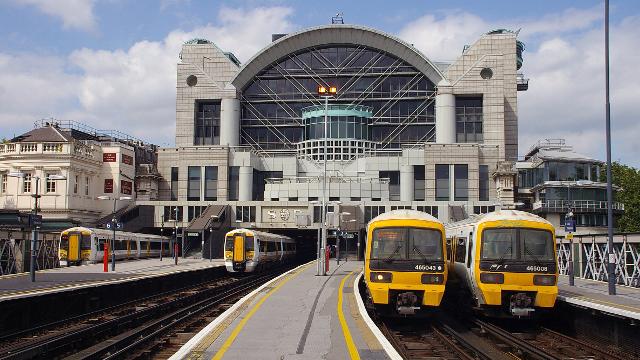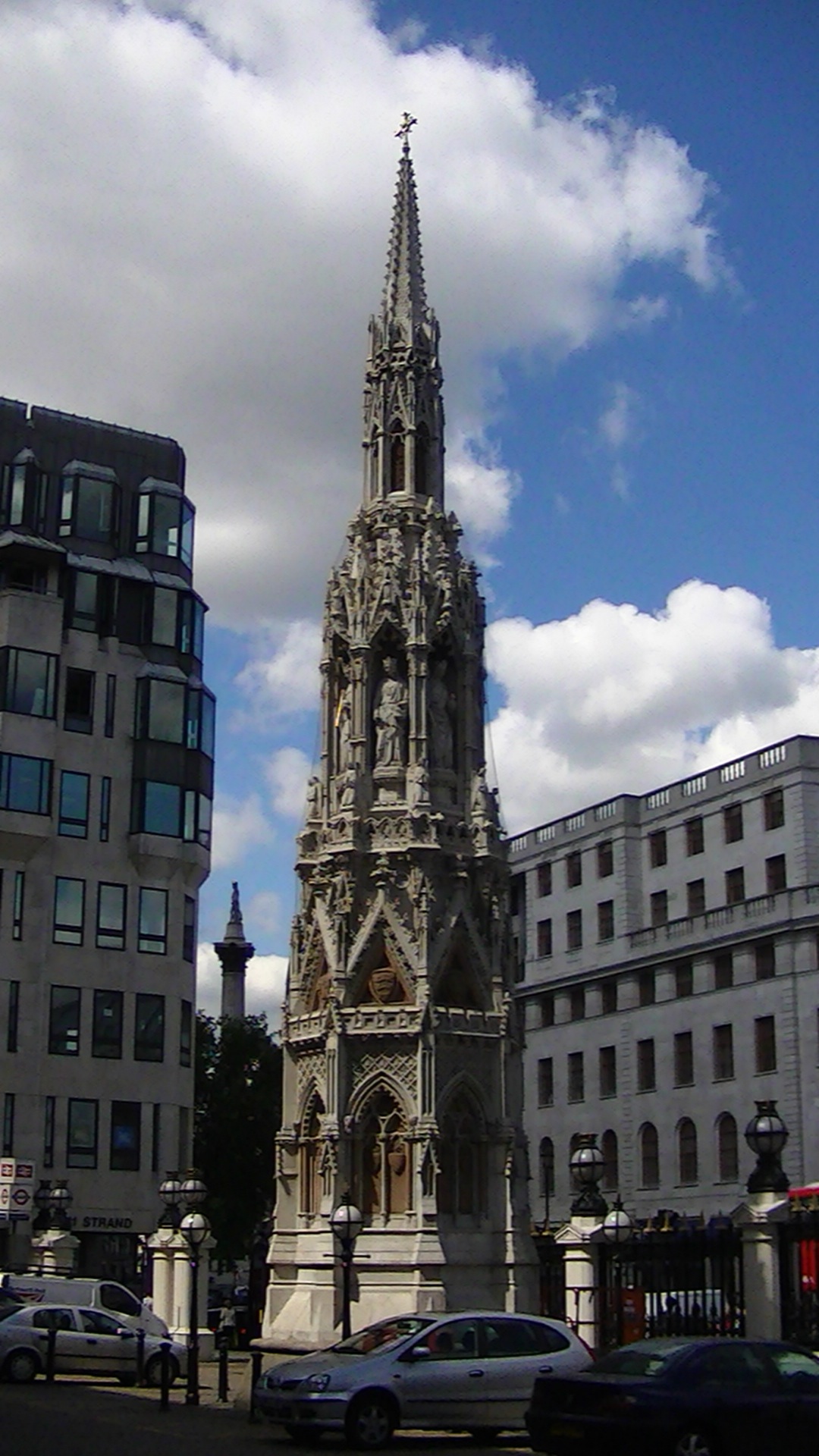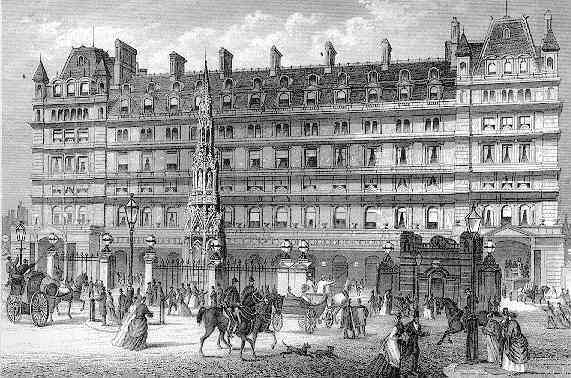Charing Cross
Charing Cross is a historic crossroads in the center of the British capital London. The name comes from the small village of Charing, where King Edward I in 1290, a memorial cross (English cross) was built. Charing Cross is officially the center of London.
History
Edward I had erected the cross to commemorate his late wife Eleanor of Castile. Charing Cross was the last of twelve varieties, has been stored in the Eleonore's coffin during the funeral procession of Lincolnshire to Westminster overnight, roughly half a mile north of the last resting place. At each place was Eduard build a Eleanor Cross, three of which are preserved to this day. That cross which stands in front of the London Charing Cross Station, a copy made by the architect Edward Middleton Barry in Victorian style in 1863, which is far larger and richer ornate than the 1647 original is destroyed. The location of the original cross was originally located a few hundred meters from the village of Charing at the top of Whitehall and south of Trafalgar Square. Since 1675 there is a body set up by Hubert Le Sueur statue of King Charles I.
In 1554 Charing Cross was the site of the last battle of Wyatt's rebellion, as Thomas Wyatt overthrow Queen Mary I of England and was replaced by Lady Jane Grey. Due to the blocking of several bridges coming the route led by Wyatt's army of Kent on St. Martin 's Lane to Whitehall. 1,000 men under Sir John Gage at Charing Cross defended the location successfully.
Previously it was assumed the name Charing descended from French chère pure ( " beloved queen "). It now seems certain that the name comes from the Old English cearring (see turn ) comes, which refers to a bend in the river; the old village of Charing the Thames bends by 90 ° to the east.
Official center
Distances to other places are usually measured from the place from where the original Eleanor Cross was erected once. In the 19th century, various laws were enacted, the Charing Cross defined as the center of the scope. Example, it was decided in 1828 that the Metropolitan Police newly founded was responsible for all areas that are within a radius of twelve miles around Charing Cross; this area was extended in 1839 for another three miles. The 1845 adopted construction zone order also defined a radius of twelve miles.
Ever since the creation of Greater London in 1965 Charing Cross has fallen completely out of use as a reference point. The only exception is when the taxi license examination: Prospective taxi drivers must learn all roads within a radius of six miles of Charing Cross by heart.
Traffic
Nearby subway stations:
- Charing Cross
- Embankment
- Leicester Square
- Westminster
Nearby stations:
- Charing Cross
- Waterloo










